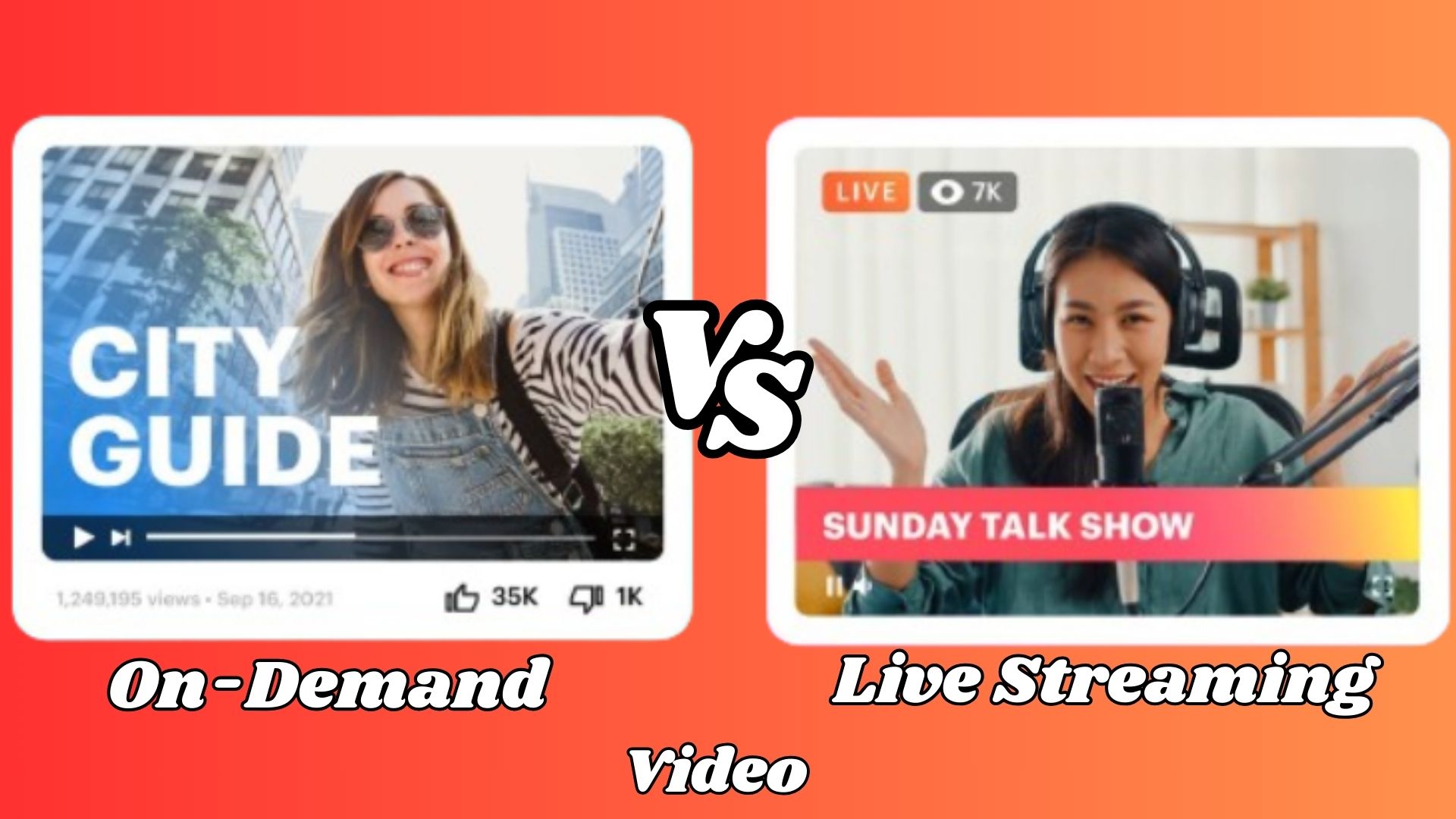In the ever-evolving world of digital media consumption, two giants stand tall: On-Demand Video VS Live Streaming. Both offer unique experiences and cater to diverse audience preferences. But which reigns supreme? Join us as we delve into the intricacies of On-Demand Video and Live Streaming to uncover their strengths, weaknesses, and the ultimate winner in this battle of content delivery methods.
Understanding On-Demand Video
On-Demand Video refers to content that is pre-recorded and made available for viewers to access at their convenience. This format allows users to watch videos whenever they choose, offering flexibility and control over their viewing experience.
Benefits of On-Demand Video:
- Flexibility: Users can watch content at their own pace, pausing, rewinding, or fast-forwarding as needed.
- Convenience: On-Demand Video eliminates the need to adhere to a specific broadcasting schedule, making it ideal for busy individuals.
- Diverse Content Library: Platforms offering On-Demand Video often boast extensive libraries with a wide range of content genres to suit varying interests.
- Accessibility: Viewers can access On-Demand Video from virtually anywhere with an internet connection, using various devices such as smartphones, tablets, or smart TVs.
Challenges of On-Demand Video
- Lack of Interactivity: On-Demand Video lacks the real-time interaction that live events offer, potentially leading to a less engaging experience.
- Content Discovery: With vast libraries of content, users may struggle to discover new videos relevant to their interests, necessitating robust recommendation algorithms.
- Delayed Engagement: Since On-Demand Video is pre-recorded, discussions and social interactions related to the content may occur after the initial viewing, reducing real-time engagement opportunities.
Exploring Live Streaming
Live Streaming involves broadcasting real-time video content to viewers over the internet. This format enables immediate interaction between content creators and audiences, simulating the experience of attending a live event from the comfort of one’s own home.
Benefits of Live Streaming
- Real-Time Interaction: Live Streaming facilitates direct engagement through features like live chat, polls, and Q&A sessions, fostering a sense of community among viewers.
- Timely Content Consumption: Viewers can stay up-to-date with live events as they unfold, whether it’s a sports match, a concert, or a keynote presentation.
- Enhanced Engagement: The excitement of live events often leads to higher viewer engagement, with audiences tuning in to witness moments as they happen.
- Monetization Opportunities: Content creators can monetize live streams through methods such as pay-per-view, subscriptions, or sponsorships, providing a revenue stream for their efforts.
Challenges of Live Streaming
- Technical Issues: Live Streaming is susceptible to technical glitches such as buffering, latency, or network disruptions, which can detract from the viewing experience.
- Time Constraints: Unlike On-Demand Video, live streams adhere to a fixed schedule, requiring viewers to be available at specific times to catch the broadcast.
- Content Permanence: Once a live stream concludes, the content may not be readily available for future viewing, unless archived or made available on-demand afterward.
Also Recommend- Get Verification On TikTok
Comparing On-Demand Video and Live Streaming
User Experience
- On-Demand Video: Offers flexibility and convenience, allowing users to watch content at their leisure.
- Live Streaming: Provides an immersive, real-time experience with immediate interaction and engagement opportunities.
Content Variety
- On-Demand Video: Boasts a vast library of pre-recorded content across diverse genres.
- Live Streaming: Offers access to live events, including sports, concerts, conferences, and more, providing timely and exclusive content.
Engagement and Interaction
- On-Demand Video: Generally lacks real-time interaction but may foster engagement through comments, likes, and shares post-viewing.
- Live Streaming: Facilitates direct interaction between creators and viewers in real-time, fostering a sense of community and immediacy.
Monetization Opportunities
- On-Demand Video: Can be monetized through advertising, subscription models, or pay-per-view options.
- Live Streaming: Offers diverse monetization avenues, including ticketed events, sponsorships, donations, and merchandise sales during live broadcasts.
Conclusion
In the showdown between On-Demand Video VS Live Streaming, there’s no clear winner as both formats cater to distinct audience preferences and serve different purposes. On-Demand Video excels in flexibility and convenience, while Live Streaming offers unparalleled engagement and real-time interaction. Ultimately, the choice between the two depends on the content creators’ objectives, audience preferences, and the nature of the content being delivered. Whether you prefer the convenience of On-Demand Video or the excitement of Live Streaming, one thing is certain: the future of digital content delivery is bright and filled with endless possibilities.

